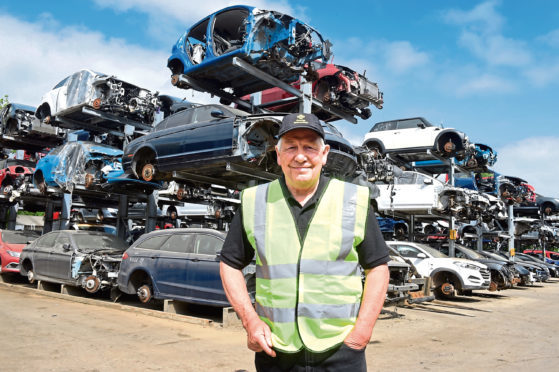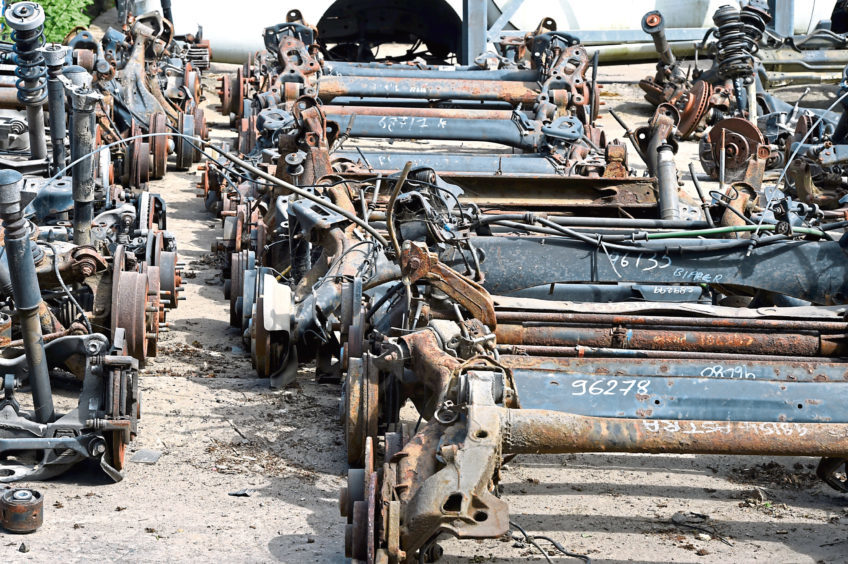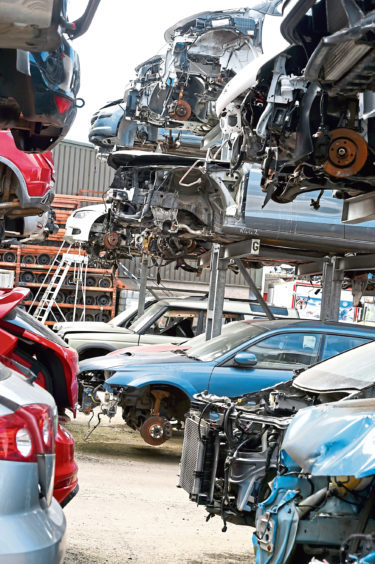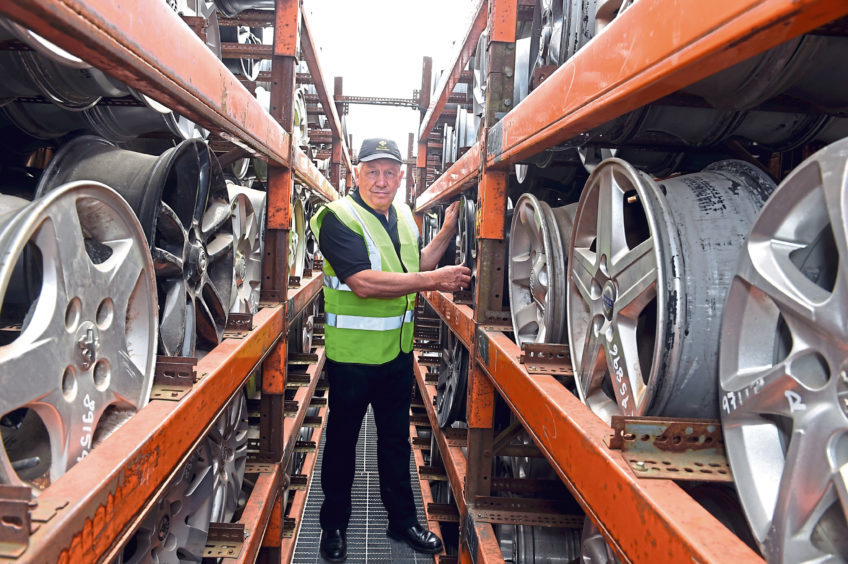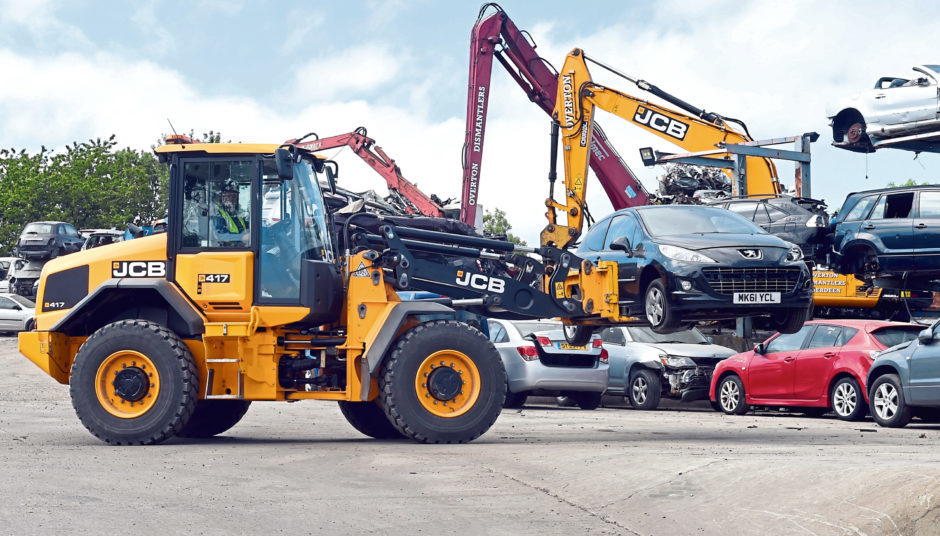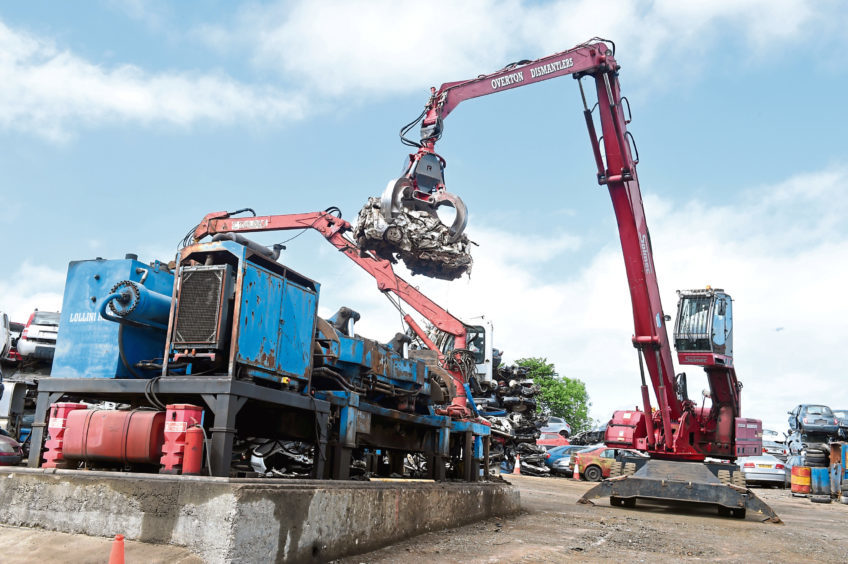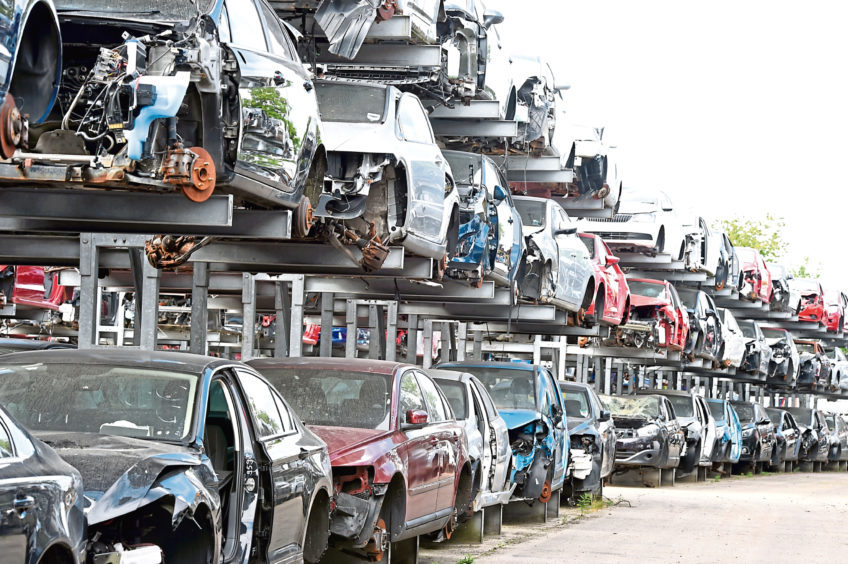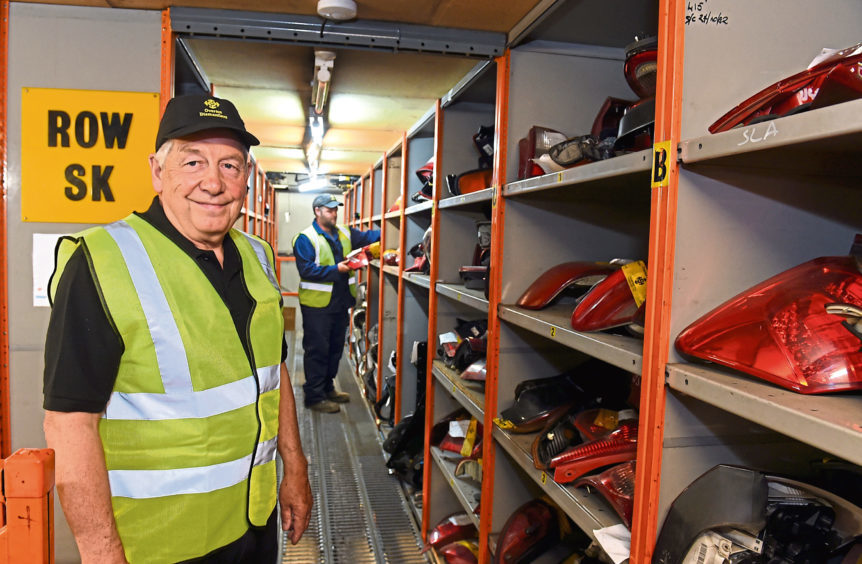We might be getting better at recycling paper and plastic, but what about that ton and a half of metal on your driveway?
Have you ever considered what happens after you decide to scrap your motor?
You may assume it’s a simple case of crushing it into a cube, but you’d be wrong.
Not only does current legislation not allow this, but the rules are getting tighter.
The previous target of recycling 85% of a car’s weight was replaced in 2015 by a stringent target of 95%, and there are noises in the pipeline of raising the bar even higher.
Although achieving such drastic improvements isn’t easy, statistics suggest that the industry’s latest developments have reduced its landfill waste by as much as 90% since the year 2000.
However, although issues to do with car recycling are a national and even a global issue, one particular pioneer in this realm lives rather closer to home.
Sandy Dalgarno can be found in an office in Dyce overlooking what can only be described as a car graveyard, and with 50 years’ experience in dealing with end-of-life vehicles, it’s not surprising he’s picked up a thing or two over the years.
“I’ve been into cars since I was about 8,” he said.
“By 15 I was learning the trade and doing real hands-on mechanic work.
“I served my time as an apprentice at City Taxi in Aberdeen, but after two days they realised I already knew it all and I began working as mechanic on the main floor.
“They still only paid me £1 and 18 shillings a week, mind,” he laughed.
From there it was merely a hop, skip and a jump before Sandy opened his own car repair business at the age of 19, building up a loyal customer base out of his parents’ croft.
Like any true entrepreneur however, it wasn’t long before he spotted a gap in the market.
“At the time there was no 24-hour recovery service,” Sandy said.
“So I bought a Land Rover and attached a crane to it, and that was the start of the recovery business.”
Today, that business is Overton Vehicle Dismantlers, a well-known local landmark for incoming air travellers at its site in Dyce.
However, not content with merely running a booming business, Sandy had bigger fish to fry, or rather, to recycle.
One of the founding members of the National Salvage Group (NSG), Sandy held the position of chairman of the organisation for 25 years, steering the group through some major industry changes with Overton Dismantlers at the forefront.
“Basically it’s a three-step approach,” Sandy said.
“Cars which come to us are usually accident damaged, so we assess whether they can a) be re-used and sold on as they are for private repairs, b) if any useful parts can be salvaged, and c) once there are no more parts to salvage, we begin the recycling process.
“Everything is dismantled in-house here, which a lot of other places don’t do.
“I think it’s important to re-use as much as you can from each car as this is the best way of recycling rather than just writing a whole car off because it’s had a bump on one door panel, for example.
“Once you do get to the stage where a car is really at the end of its useful life however, we start with the auto-dismantler.
“I describe it like a big bird of prey which holds down a vehicle with one arm and can accurately tear out different parts of the car with its other arm.
“It’s controlled by two little levers and can take a car apart in six minutes.
“The same job would take a person a day and a half.
“It’s a case of separating all the metals which are then recycled separately.
“The remaining bits are crushed into a bale which is sent to a fragmentizer, ready to be shredded up for further recycling.
“The only bits not recycled are the foam from seats and tiny bits of glass and rubbish.
“Though there are trials at the moment to recycle the foam too, making it into roof slates – I’ve actually seen them and they look great. You wouldn’t know the difference.
Now 50 years and some 150,000 cars later, 70-year-old Sandy will soon be hanging up his overalls for the last time.
With his thoughts on retirement and spending more time with his family, the thriving business has recently been put up for sale.
Though by his own admission it won’t be an easy goodbye, so it’s just as well he’s got a few classic motors at home to keep himself occupied.
